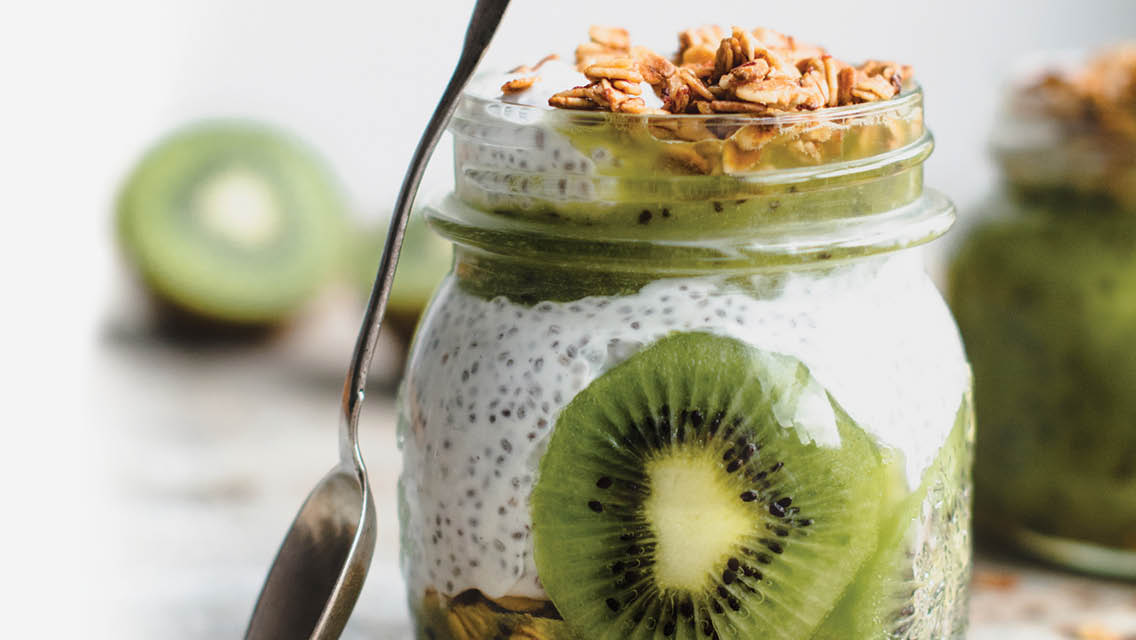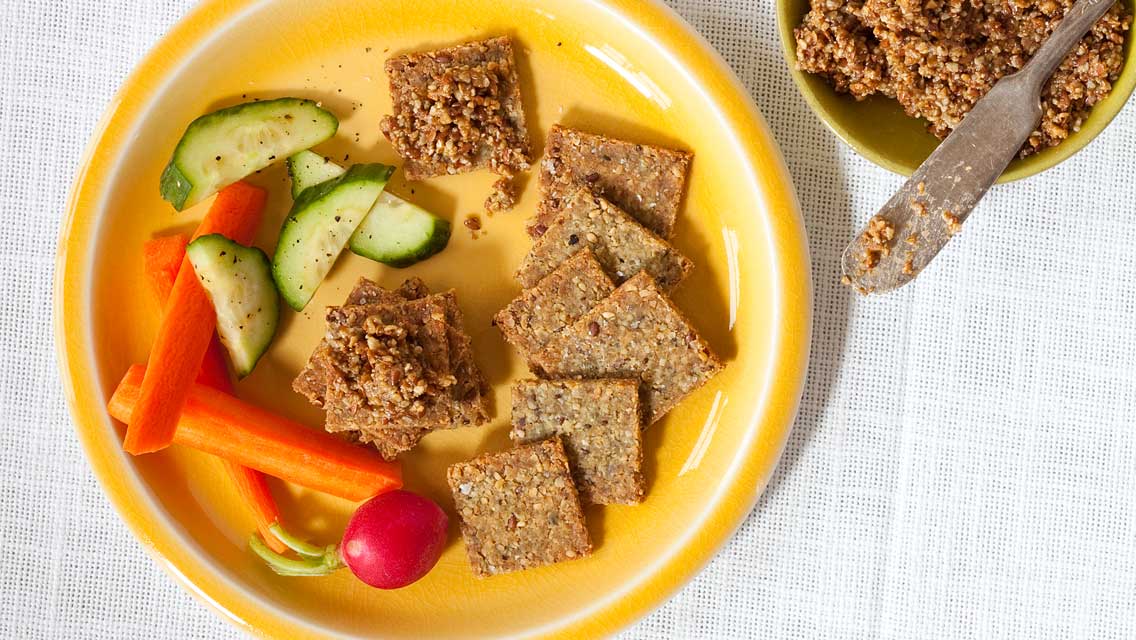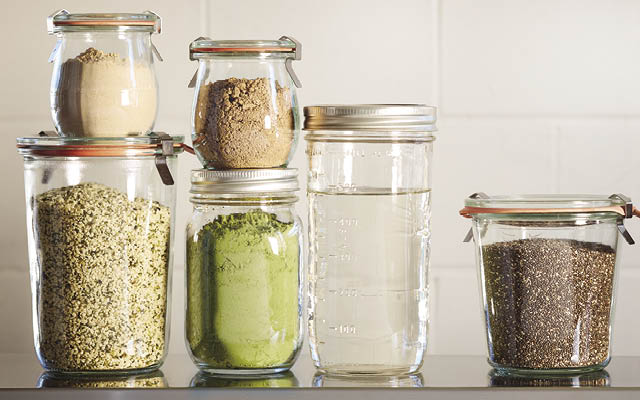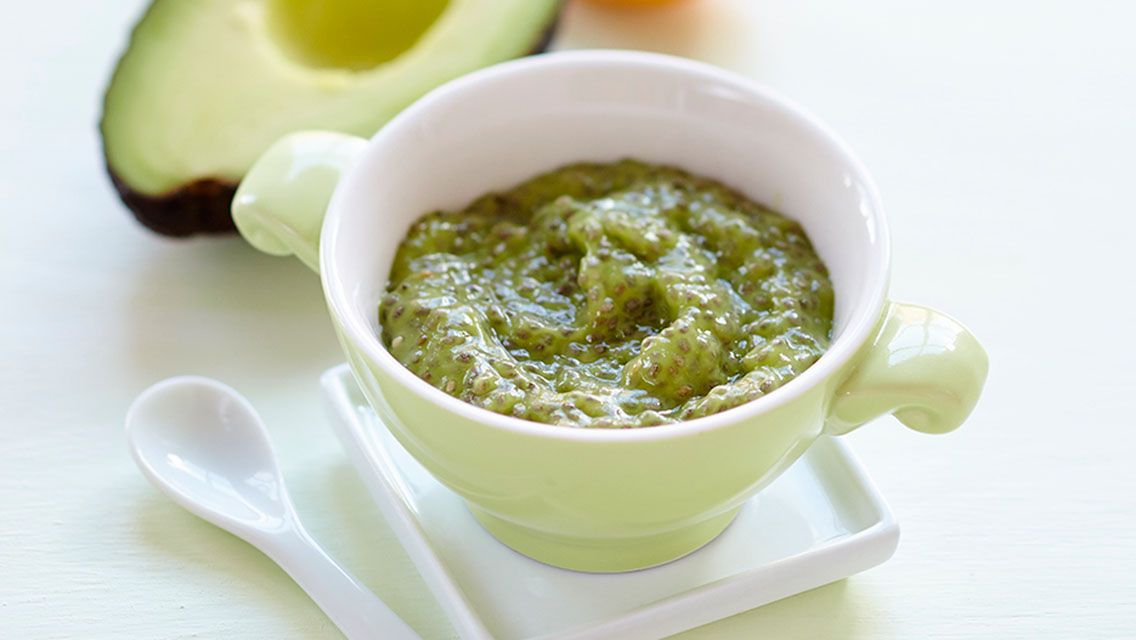Native to the regions now known as Mexico and Guatemala, chia seeds have been cultivated for human consumption for more than five millennia. Early Aztec and Mayan cultures used chia in folk medicine and cosmetics, and offered it to the gods in religious ceremonies. They viewed it as a source of strength and vigor, a tiny food worthy of divine appreciation.
“Chia may be tiny, but these little seeds pack a powerful nutritional punch,” says clinical nutritionist Liz Lipski, PhD, author of Digestive Wellness. “Their popularity has skyrocketed over the past decade, in part due to their nutrient density and in part because they are extremely versatile as a functional food.”
Nutritional Profile
“Chia seeds will significantly boost the nutritional value of whatever you choose to make with them,” says Lipski. These seeds are 40 percent fiber by weight, and a 1-ounce serving — about 3 tablespoons — boasts 11 grams of fiber.
That could be a windfall for fiber-starved Americans: The average U.S. adult consumes only 10 to 15 grams of fiber per day, while the USDA recommends about twice that; some functional-medicine practitioners believe 50 grams daily is ideal.
Research suggests that adequate fiber intake significantly lowers the risk for developing heart disease, hypertension, type 2 diabetes, obesity, stroke, and certain gastrointestinal diseases.
Chia seeds contain both insoluble and soluble fiber, which helps balance blood sugar, stabilize insulin, and support healthy elimination. The soluble fiber in each seed can also absorb up to 12 times its weight in water. This expansion promotes feelings of satiety.The fiber also helps feed beneficial gut bacteria.
A 1-ounce serving of chia seeds contains 4 grams of protein and all nine amino acids, which makes them a complete protein, good for building and maintaining muscle and great for plant-based eaters looking to add more protein to their diet. It also has 9 grams of fat, half of which is alpha-linolenic acid (ALA), an anti-inflammatory omega-3 fatty acid.
Chia seeds are brimming with antioxidants that offset oxidative stress, as well as minerals that support bone health, including manganese, phosphorus, and calcium.
How to Eat Chia Seeds
They are especially good in smoothies or as the base for easy puddings. Mix into hot or cold cereal, add to yogurt, or use to make jam. Their capacity to absorb liquid makes them great for thickening sauces. They also may be used in place of an egg in baking.
Chia can be eaten dry and whole, but soaking them makes the nutrients more bioavailable. Soaked chia seeds are also easier to eat. Raw chia can get stuck in your teeth — which isn’t harmful but can be annoying. (Or, try them in these creamy and sweet DIY ice pops.)
This was excerpted from “Tiny & Mighty” which was published in Experience Life magazine.





This Post Has One Comment
I didn’t realize chia seeds had so many pluses. I put them in smoothies and often as a topping on cereal.